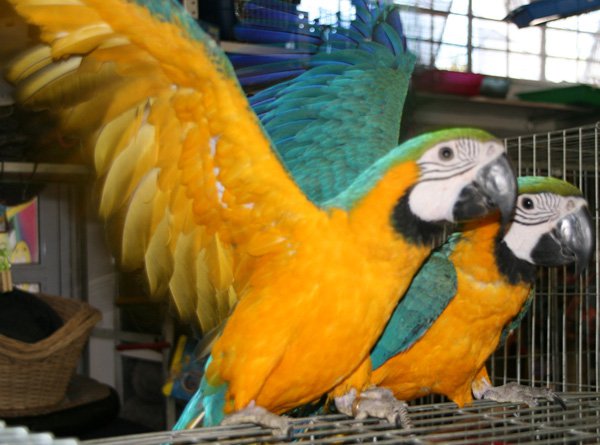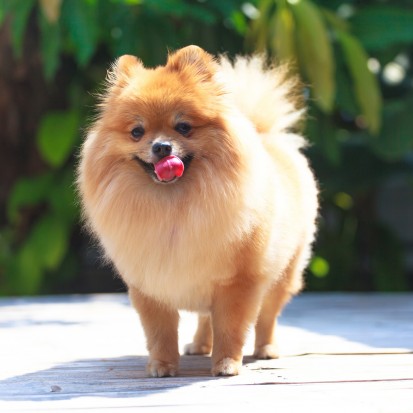
With the horrible reputation that pit bulls receive in the press and national media, it is not surprising that many Americans believe that pit bulls are simply a “lost breed” incapable of real training. Much of this misperception comes from the fact that pit bulls have been used as fighting dogs. Because pit bulls have the ability to lock their jaws and therefore hand onto an object or opponent for hours at a time, it may seem to casual onlookers like the pit bull simply has a mind of its own and is incapable of being trained into an obedient pet that can be trusted around other people.
The fact remains, however, that any dog breed is capable of training and the pit bull is certainly no exception. While they have a reputation of being harder to train than German shepherds or cocker spaniels, this does not mean that they are incapable of becoming very reliable and trustworthy pets that will listen to the commands of their owners. There are really only five simple things to remember when you are trying to train a pit bull or any large dog breed:
• Negative vs. Positive Reinforcement
• Tone of Voice
• Training Tool
• Special Toy
• Limited Training Time
Negative vs. Positive Reinforcement
You have to make a decision and stick with it: do you want to use positive or negative reinforcement to train your pit bull? Although many child-rearing experts believe that the only way to raise a child is by using positive reinforcement, this is not always possible with dogs. The reason: the communication barrier. Although a dog is capable of developing a vocabulary of few hundred words, the fact remains that almost everything a person says is a complete mystery to a dog. So while parents can explain why certain behaviors are bad or dangerous, this is not possible with a dog.
Although a person can use special sprays that try to imprint a location upon a pit bull when trying to teach the animal where it is appropriate to use the restroom, it is often far more effective to simply rub the animal’s nose in the feces and tell them “no”. However, misuse of negative reinforcement can have long-lasting consequences which is why it must be used both sparingly, and in conjunction with positive reinforcement. The fact is that any dog, including a pit bull, wants the praise and love of their owners which is why positive reinforcement is so powerful. But, due to the communication barrier, some lessons must be taught using negative reinforcement or else the animal may injure itself or others.
Tone of Voice
Although dogs have a limited vocabulary, they are very much in tune with the mood of their owner. Oftentimes, the mere tone of one’s voice is enough to tell the dog a great deal about its behavior and what the owner wants of it. When trying to train any pit bull, it is important that the owner uses three very distinctive tones when communicating with the animal:
• Instructional Tone
• Praise Tone
• Normal Tone
The instructional tone is very straightforward: it is simply the tone of voice you use when trying to train your pit bull. It should not be negative or condemning, merely firm and unwavering. Each and every time you are trying to train the pit bull, use this tone and do not use it any other time. This is the cue to your animal that it is “work time” and that they are expected to listen to what you have to say.
The praise tone is precisely that: it is a reward to the animal and a way of telling him/her that you are proud of them. It is generally higher-pitched and should be accompanied by a treat of some kind. Again, the animal need not really understand what you are saying, it just needs to know that it did a good job.
Your normal tone is up to you. It is just the manner in which you normally communicate and interact with the pit bull. It only needs to be distinctive from the instructional and praise tones so that the animal does not become confused. Now some of you may have noticed that there is no “punishment tone”—and that is for good reason! Any time that an animal does something wrong, do not resort to any negative tone. You want to use your instructional tone and teach the dog that this is not the way to do things. I have personally trained many dogs and have never needed any punishment tone. As I stated earlier, a dog genuinely wants to win your praise and if you are patient with the animal, it will not need any punishment tone.
Training Tool
As I said earlier, you will have to learn to use both positive and negative reinforcement. I am certain that no animal needs physical punishment but they do need a way to understand when they are doing something wrong and this is where the training tool comes in. Now some dog trainers prefer to use a bottle of water to spray the animal when it does something wrong. Honestly, this can be very effective but I personally don’t like the smell of wet dog fur because no matter how clean you keep a dog, they will still smell pretty bad when wet.
Personally, I choose to tape two paint stirrers together and create what is known as a “slap-stick”. The point is that you can lightly slap the animal on its hind quarter with the stick any time it waivers from your training. This does not hurt the dog but it does create a loud “snapping” sound that they tend to dislike. Remember, a pit bull or any dog has an emotional capacity of a 4 or 5 year-old child. They really do want to please you and you do not need to physically impose yourself upon them. But, you will need some kind of training tool to help you with the negative reinforcement and both a bottle of water and a slap-stick work great.
Special Toy
If the slap-stick is the negative reinforcement tool, then the toy is for positive reinforcement. This can be a tennis ball, stuffed animal, or whatever your pit bull enjoys playing with. The only thing you really need to remember is that this toy must not be available to the dog at all times—it must be seen as a treat! After you are done training the dog for that day, take out their toy and reward them with a few minutes of play time. Just remember to put it back up when you are done because if they have access to it at all times, it will lose its power over the dog and they will not be as motivated during training.
Limited Training Time
Some new pet owners are tempted to try training their dog way too much. They think that by spending more time with the animal, it will take less time to get them to do what they want. Unfortunately, dogs do not work this way. They have a very limited attention span (roughly 20-30 minutes—tops!) for training. If you spend more than thirty minutes during any one training session, the animal will begin tuning you out. When you notice that the pit bull is starting to lose interest in training, it is probably best that you stop. Over time, you can increase this attention span by slowly extending the training period by a couple of minutes a day. Still, thirty minutes is about the most time you want to spend during any one session.
A pit bull is definitely one of the more intelligent dog breeds and can easily be trained to interact with people without being a threat. Just remember that negative reinforcement must be used sparingly and that an animal will remember a negative experience much longer than a positive one. You need the pit bull to trust you and want your love so do not try the “tough love” approach as it tends to make an animal more aggressive and less likely to listen. By taking the simple steps listed above, you can in fact train your pit bull to be every bit as dependable and loving as any other breed.
About The Author
David Black is a pit bull enthusiast and author of Professional Pit Bull Training Secrets. PitBull Secrets is one of the largest online pit bull communities in the world. http://www.pitbulltrainingsecrets.com.
Article Source: http://EzineArticles.com/?expert=David_Black
 Tips on Taking Care of a Sick Dog
Tips on Taking Care of a Sick Dog
Folks regula
Tips on Taking Care of a Sick Dog
Tips on Taking Care of a Sick Dog
Folks regula
 Dog Gear and Accessories for Training
Dog Gear and Accessories for Training
Canines
Dog Gear and Accessories for Training
Dog Gear and Accessories for Training
Canines
 Canine Endocarditis - What Is It?
Canine Endocardit
Canine Endocarditis - What Is It?
Canine Endocardit
 Build the most Luxurious Chicken Coops for your Pets
Build the most Luxurious Chicken Coops for your Pets
Build the most Luxurious Chicken Coops for your Pets
Build the most Luxurious Chicken Coops for your Pets
 Health, Longevity And Care Of The Pomeranian Dog
Health, Longevity
Health, Longevity And Care Of The Pomeranian Dog
Health, Longevity
Copyright © 2005-2016 Pet Information All Rights Reserved
Contact us: www162date@outlook.com